A pedalboard is indispensible for organ music. I'm no good at playing one, but one must have one to learn. The problem is that MIDI pedalboards are quite expensive. Most are designed for on-stage performance, to be used as backup bass pedals when your bass player is out sick. What's worse is that the available pedalboards are almost all single-octave. Two-octave pedalboards are incredibly expensive; googling around I found them in the $1500 price range. So I decided to look into building my own.
First, I got a two-octave organ pedalboard on eBay. The fellow who sold me this also provided reed switches, and did a very nice job packaging the thing for shipment. Thanks, again, Hans!
Next, I purchased Howard Cano's Super MIDIPeds device. This is a small microcontroller board that will generate MIDI note-on and note-off messages from up to 32 switches. It's beautifully crafted and very simple to work with thanks to the straightforward documentation and Howard's fine technical support. The Super MIDIPeds, along with several other interesting devices Howard makes, is available on eBay.
I had to add some framing to the pedalboard. A few feet of 1x6 and 1x3 oak seemed appropriate. I then hot-glued small disc magnets to the pedal ends. As it turned out, the magnets I picked up (from Home Depot) were a bit stronger than called for, so I had to mount the reed switches further away than I expected. But it worked out fine. I hot-glued a 14 gauge copper ground wire to the frame below the pedal ends to serve as a ground bus. I soldered the reed switches to the ground bus and hot-glued the ribbon cable for the Super MIDIPeds to the upper frame. I then routed the individual switch wires from the ribbon cable to the reed switches, and tacked them down with more hot glue.
The result looks like this:
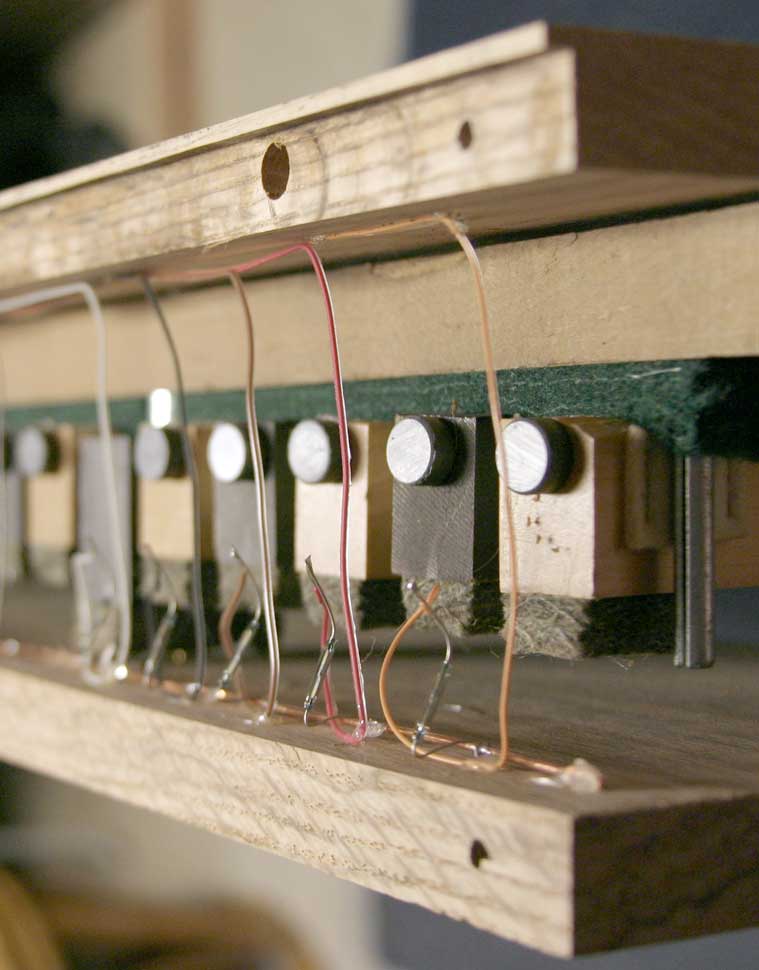
For a rear cover, I used 1/4" lauan. I left a hole for the back panel, where I would mount the Super MIDIPeds.
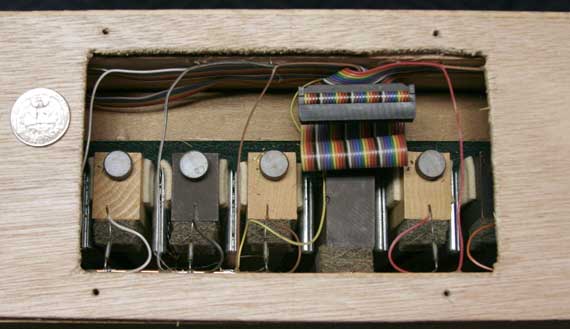
For a panel, I cut up an old Sun optical mouse pad. I removed all the switches and the power connector from the Super MIDIPeds, and used a panel-mount power connector. I mounted the Super MIDIPeds on the panel along with the MIDI connector, and drilled a hole for the power LED.
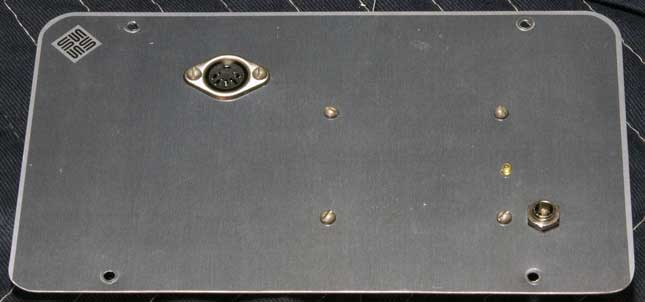
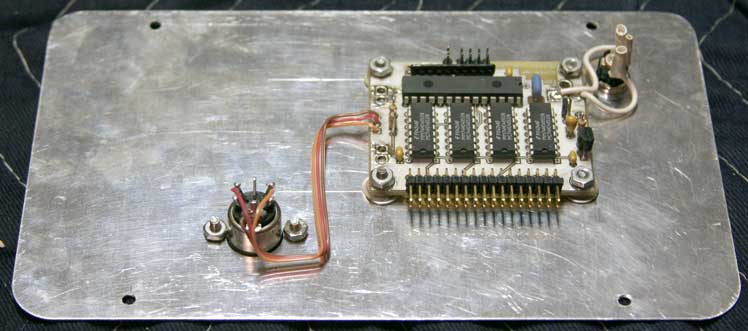
Here's the panel about to be assembled to the rear cover:
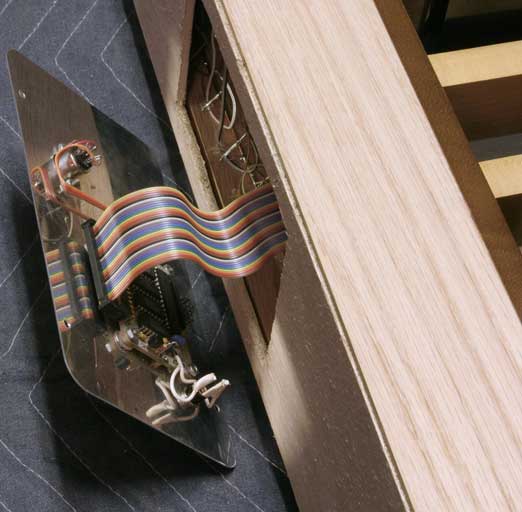
Finally I attached the panel and powered it up.
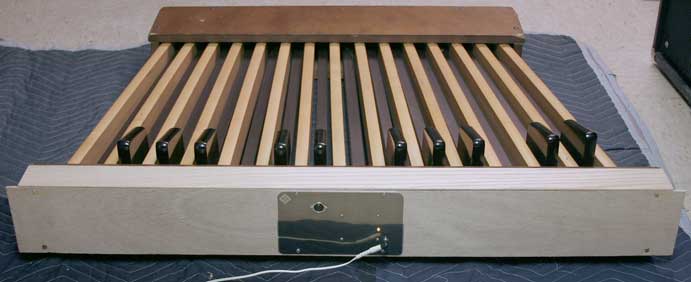
Total cost of this project was about $160.
I'd like once again to thank Hans Heitmann and Howard Cano for their help in assembling all the pieces for this project.